After a late party the night before, I was up bright and early taking up Max for our weekly lesson. After warming up with some trotting and cantering, I worked on roll-backs and coming to a complete halt from a canter. I also engaged in various exercises to loosen up the pelvis, shoulder and neck muscles. Pretty sore business.
Then the lesson started...today we worked on transitions. But this was more than simply going from a halt to a canter or from trot to canter to walk and back again. It was about RIDING the horse, no matter what you're doing. All too often, I'd pretty much ease up on Max after making a transition or a complete halt and this tends to result in Max losing energy. Then, when I start up again, I have to go through the entire process of building up the energy and, more importantly, re-engaging his attention (Hey, buddy, we're going back to work!).
The key, as a I learned, is to maintain leg contact, minimal bit contact, and keep my profile vertical- no learning forward, no matter how subtle. This is especially important in going into a trot or canter from a complete halt- you have to stay off the horse's fore-end so the horse can be free to work his front legs and be able to launch off of his haunches. Otherwise, you're acting like a weight on the front end, blocking the horse from moving effectively (he more "stumbles" into the gait/movement- kind of like me tripping forward into a run).
Also, at the same time, it's essential to use pressure from pelvis along with a half-halt to build up the energy and then letting the horse move forward. It sounds easy but there's a series of actions that have to performed simultaneously and you have to be organized in executing them (i.e. not in a hurry). Also key, is staying off the bit and letting the horse have his head. If everything is done right, the horse will drop his hindquarters and leap up and forward into the motion. This is most dramatic going into a canter from a dead halt.
By the time the lesson was through, we were executing them pretty well and especially on the canters. He was execurting left-lead canters from a dead halt with little urging from me- it used to take a lot of kicking and motion to do this. I'll have to keep practicing this until it becomes second nature and I think it will go a long way towards helping keeping him organized in drill team practice and charges.
The other aspect of the transitions was shifting down from either a canter or trot to either a walk or a complete halt. The transition to the walk was especially tricky because it's easy to apply too much pressure through the pelvis, thus bringing the horse to an abrupt halt. It's a combination of breath/pelvis pressure combined with keeping your leg on and even kicking just a bit (a small bit) to keep him moving foward while slowing him down. It's like applying gas and the clutch and takes a bit of practice.
It appears that I have new things to study and practice on. It never seems to end! :-)
Then the lesson started...today we worked on transitions. But this was more than simply going from a halt to a canter or from trot to canter to walk and back again. It was about RIDING the horse, no matter what you're doing. All too often, I'd pretty much ease up on Max after making a transition or a complete halt and this tends to result in Max losing energy. Then, when I start up again, I have to go through the entire process of building up the energy and, more importantly, re-engaging his attention (Hey, buddy, we're going back to work!).
The key, as a I learned, is to maintain leg contact, minimal bit contact, and keep my profile vertical- no learning forward, no matter how subtle. This is especially important in going into a trot or canter from a complete halt- you have to stay off the horse's fore-end so the horse can be free to work his front legs and be able to launch off of his haunches. Otherwise, you're acting like a weight on the front end, blocking the horse from moving effectively (he more "stumbles" into the gait/movement- kind of like me tripping forward into a run).
Also, at the same time, it's essential to use pressure from pelvis along with a half-halt to build up the energy and then letting the horse move forward. It sounds easy but there's a series of actions that have to performed simultaneously and you have to be organized in executing them (i.e. not in a hurry). Also key, is staying off the bit and letting the horse have his head. If everything is done right, the horse will drop his hindquarters and leap up and forward into the motion. This is most dramatic going into a canter from a dead halt.
By the time the lesson was through, we were executing them pretty well and especially on the canters. He was execurting left-lead canters from a dead halt with little urging from me- it used to take a lot of kicking and motion to do this. I'll have to keep practicing this until it becomes second nature and I think it will go a long way towards helping keeping him organized in drill team practice and charges.
The other aspect of the transitions was shifting down from either a canter or trot to either a walk or a complete halt. The transition to the walk was especially tricky because it's easy to apply too much pressure through the pelvis, thus bringing the horse to an abrupt halt. It's a combination of breath/pelvis pressure combined with keeping your leg on and even kicking just a bit (a small bit) to keep him moving foward while slowing him down. It's like applying gas and the clutch and takes a bit of practice.
It appears that I have new things to study and practice on. It never seems to end! :-)




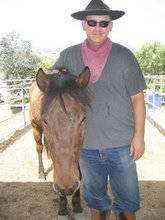
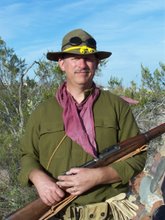
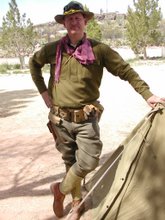
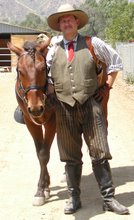
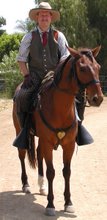

No comments:
Post a Comment